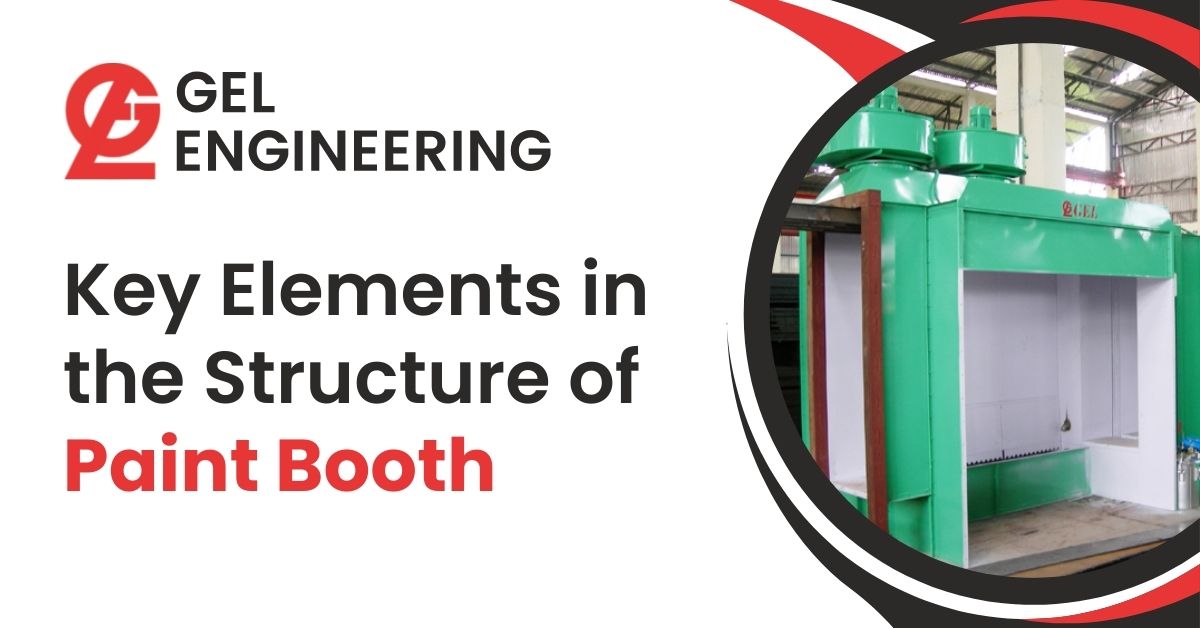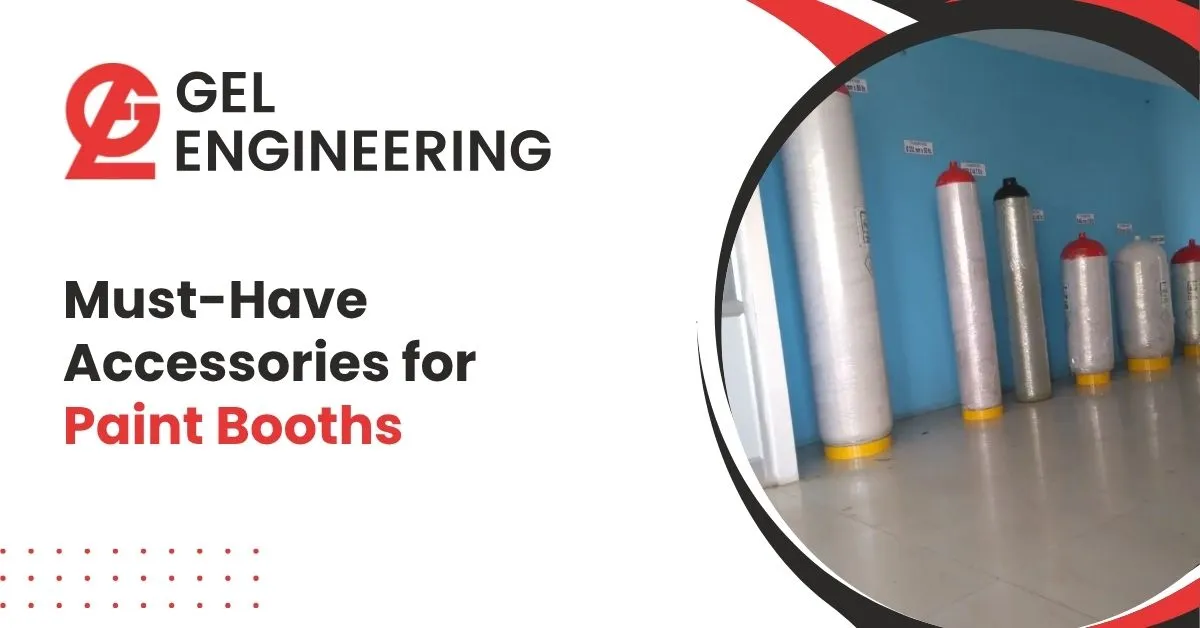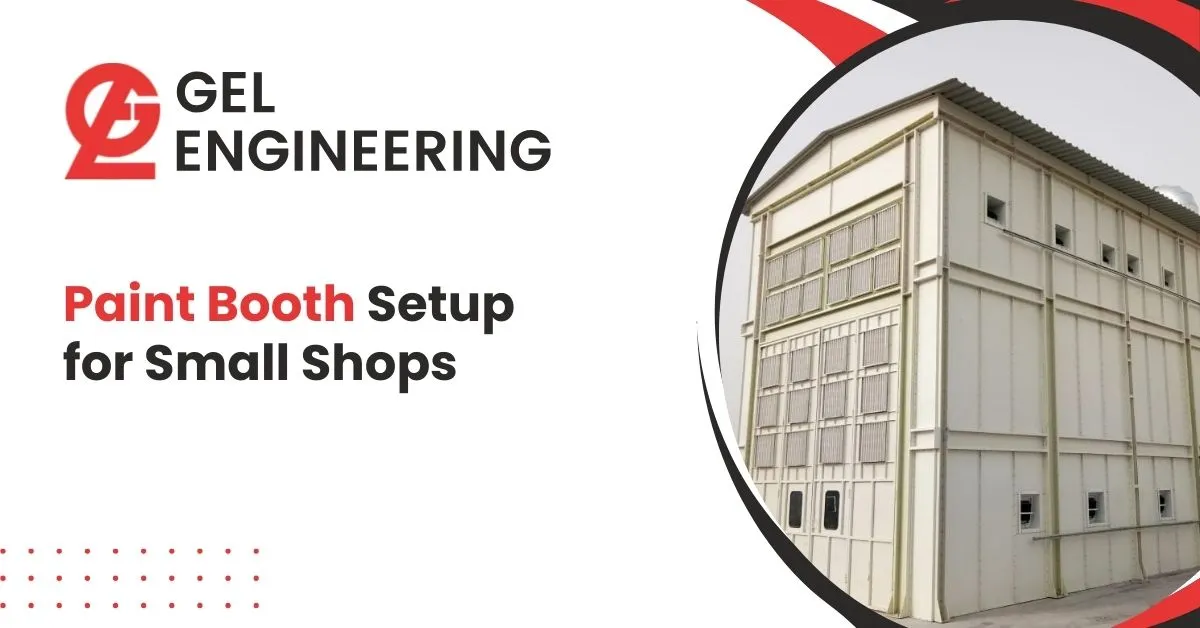Enhance Performance, Safety & Efficiency in Your Spray Painting Process When it comes to industrial…

A paint booth is an essential part of the painting process, whether it’s for cars, furniture, or industrial equipment. The structure of a paint booth is designed to create an environment that enhances the quality of the paint job while keeping the workspace safe for operators. In this blog, we’ll explore the key components that make up the structure of a paint booth and why each part is important.
Table of Contents
Structure of a Paint Booth
1. Walls
Material
The walls of a paint booth are typically made from durable materials like steel or composite panels. These materials are chosen because they can withstand the harsh chemicals found in paints and solvents.
Design
- Smooth Surface: Paint booth walls should have a smooth finish. This makes it easier to clean and prevents paint buildup, which can cause defects in future paint jobs.
- Height: The height of the walls is crucial, especially for taller items like trucks or industrial machinery. The walls should be tall enough to allow for proper airflow and ventilation.
2. Ceiling
Lighting
The ceiling of a paint booth usually contains bright, even lighting to help operators see their work clearly. Good lighting is essential for spotting imperfections in the paint job and ensuring that the finish is flawless.
Airflow
The ceiling design is also important for airflow. Many paint booths have exhaust vents in the ceiling to help remove overspray and fumes from the workspace. Proper airflow ensures that the air inside the booth remains clean and reduces the risk of fire hazards.
3. Floor
Material
The floor of a paint booth should be made from a non-porous, durable material that can withstand spills and heavy equipment. Common choices include epoxy or vinyl flooring, which are easy to clean and maintain.
Design
- Sloped Floors: Many paint booths feature sloped floors that guide overspray and spills towards drainage points. This design prevents paint from pooling and makes cleanup much easier.
- Smooth Surface: A smooth floor surface is vital for safety. Operators must be able to move freely without tripping or slipping.
4. Ventilation System
Types of Ventilation
The ventilation system is a critical component of a paint booth’s structure. Proper ventilation helps control air quality and keeps the work environment safe. Here are the main types of ventilation systems used in paint booths:
- Cross-Draft Ventilation: Air flows from one side of the booth to the other, which helps to remove overspray and fumes but may not be as efficient as other methods.
- Down-Draft Ventilation: This system pulls air from the top of the booth and exhausts it through the floor, providing better airflow and removing contaminants more effectively.
- Semi-Downdraft Ventilation: A combination of cross-draft and down-draft, this system allows for balanced airflow, ensuring clean air circulation.
Exhaust Fans
Exhaust fans are essential for pulling dirty air out of the booth and maintaining a steady flow of fresh air. These fans help keep the air clean and reduce the risk of flammable vapors building up inside the booth.
5. Heating System
Types of Heating
A heating system is necessary for curing paint properly and ensuring it adheres well to the surface. Common heating methods include:
- Gas Heating: Provides high heat output and is often used in larger booths. However, it requires proper ventilation to prevent harmful fumes.
- Electric Heating: Safer and easier to install, electric heaters are great for smaller booths and provide consistent warmth.
- Infrared Heating: Delivers quick, focused heat that can speed up drying times, making it an efficient choice for larger items.
6. Filtration System
Types of Filters
A good filtration system is vital for maintaining air quality inside the paint booth. Here are the main types of filters you might find:
- Mechanical Filters: These catch larger particles, such as dust and overspray. They usually serve as pre-filters and should be replaced regularly.
- HEPA Filters: High-Efficiency Particulate Air (HEPA) filters trap very small particles and are essential for preventing harmful substances from entering the booth.
- Activated Carbon Filters: These filters help eliminate Odors and volatile organic compounds (VOCs) from the air, making the environment safer for operators.
7. Safety Features
Fire Safety
Safety is a top priority in any paint booth. Key safety features include:
- Fire-Resistant Materials: The booth should be constructed with fire-resistant materials to minimize fire hazards.
- Automatic Fire Suppression Systems: These systems can detect heat and smoke, automatically activating to suppress fires.
Emergency Exits
Every paint booth should have clearly marked emergency exits to ensure operators can evacuate quickly in case of an emergency.
Frequently Asked Questions
What is a paint booth?
A paint booth is a controlled environment where painting tasks are performed. It is designed to ensure optimal conditions for applying paint, preventing contamination, and enhancing safety for workers.
Why is the structure of a paint booth important?
The structure of a paint booth is crucial for maintaining a clean, safe, and efficient workspace. Proper design and components ensure high-quality paint jobs while minimizing the risk of fire hazards and harmful fumes.
What materials are commonly used for paint booth walls?
Paint booth walls are typically made from durable materials such as steel or composite panels. These materials are resistant to harsh chemicals in paints and solvents.
How does ventilation work in a paint booth?
Ventilation systems in paint booths are designed to maintain air quality by removing overspray and fumes. Common types include cross-draft, down-draft, and semi-downdraft ventilation, each offering different airflow patterns.
Conclusion
The structure of a paint booth is carefully designed to create a safe and effective working environment. From walls and ceilings to ventilation systems and filtration methods, every component plays a vital role in ensuring high-quality paint jobs and the safety of the operators. When investing in a paint booth, it’s essential to consider these structural elements to achieve the best results in your painting projects.
Related Guides: Powder Coating Booth




